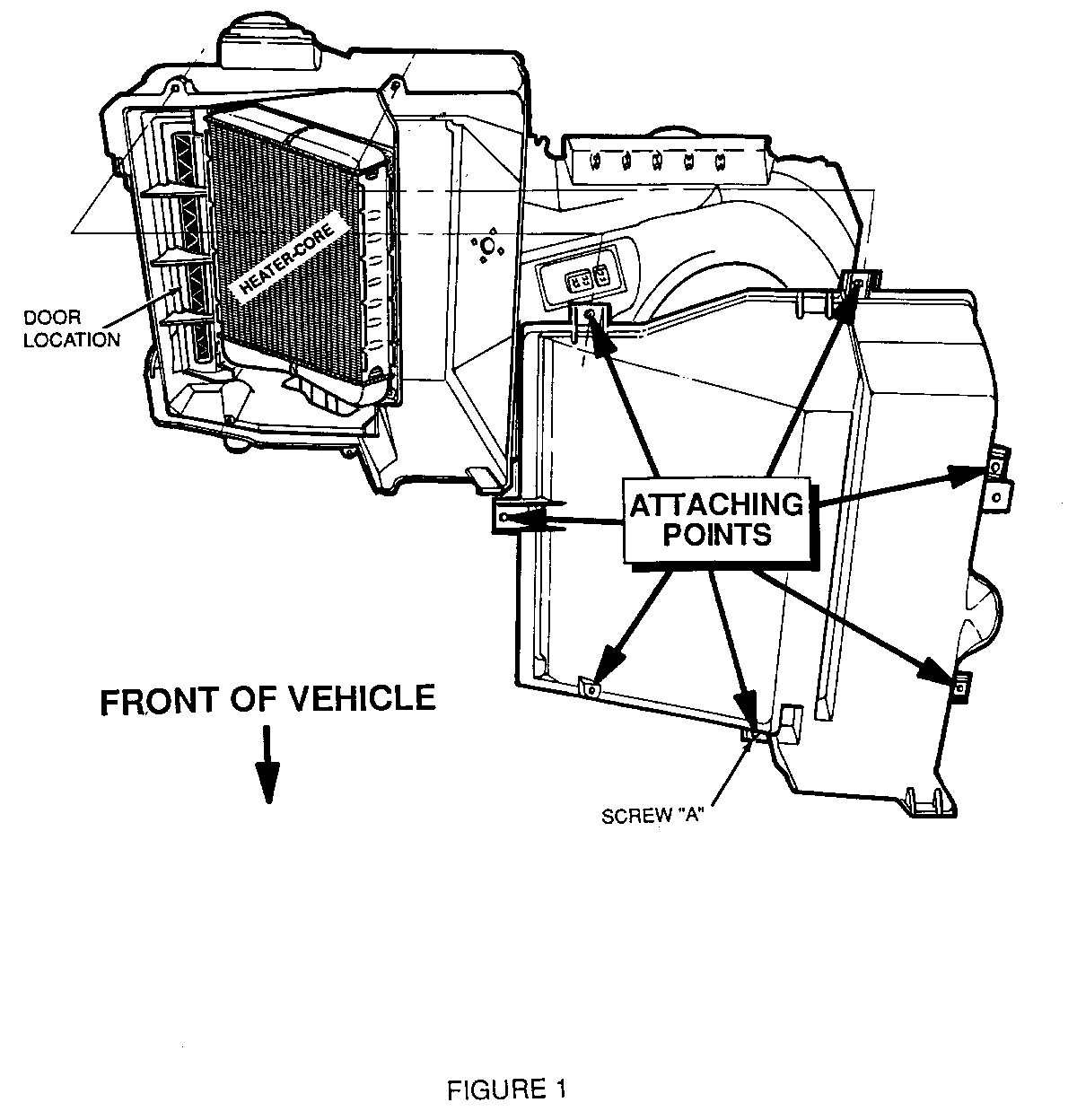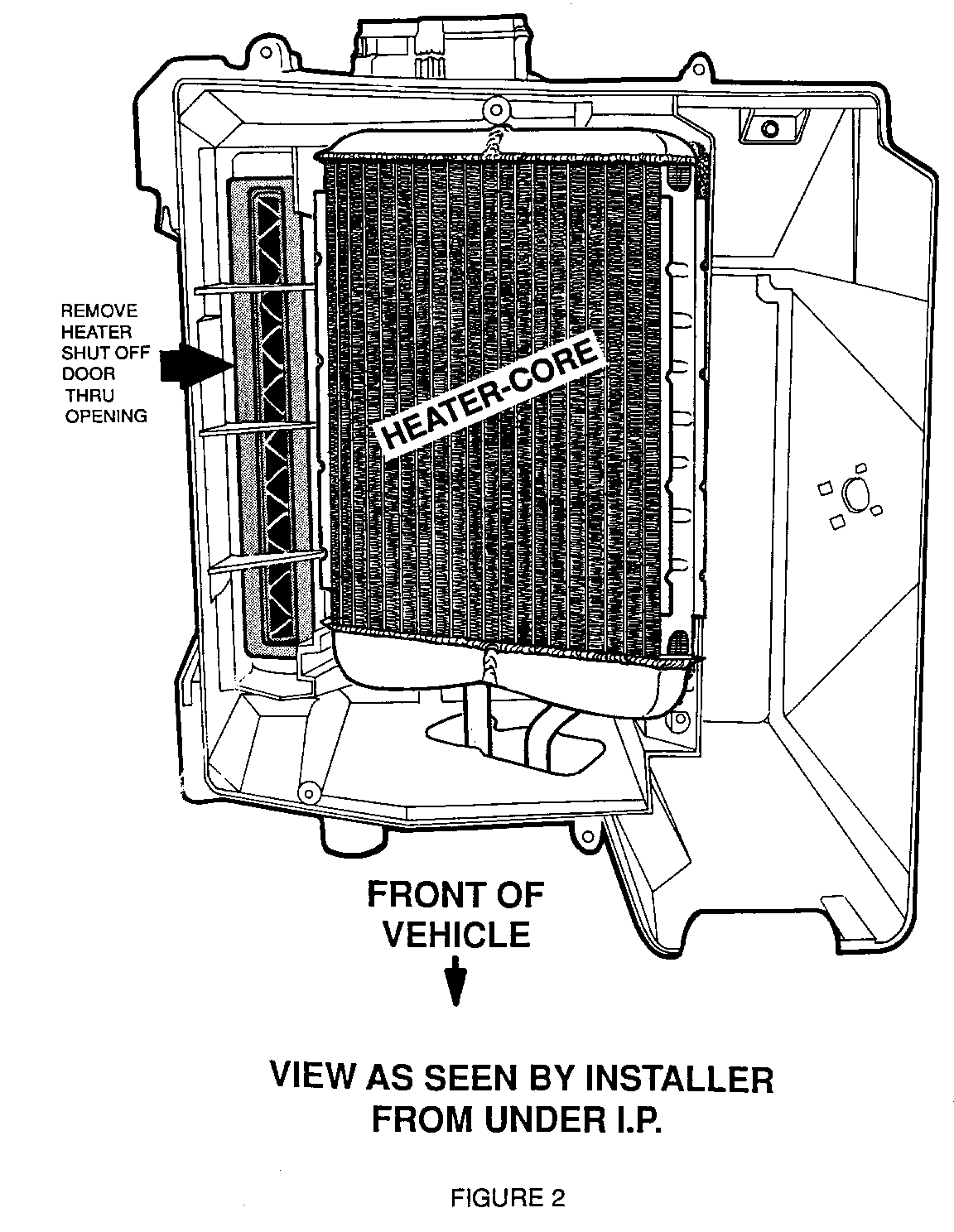HIGH BLOWER SPEED REQUIRED FOR GOOD AIRFLOW

SUBJECT: HIGH BLOWER SPEEDS REQUIRED FOR SUFFICIENT AIRFLOW (REMOVE HEATER SHUT OFF DOOR) VEHICLES AFFECTED: 1993 "B" AND "D" MODELS
APPLICATION:
1993 "B" and "D" cars built within the VIN breakpoints listed below:
Arlington Cadillac: 711748 through 713900 Buick: 411630 through 412850 Chevrolet: 110318 through 111916
Willow Run:
Buick: 401886 through 402200 Chevrolet: 111014 through 112700
CONDITION:
Higher than normal blower speeds will be experienced or selected by customers while in heater, defroster and air conditioning settings.
CAUSE:
The heater shut off door may have failed and fallen into the heater air stream restricting flow, requiring higher blower speeds in automatic and manual systems.
CORRECTION:
The repair procedure is to remove the broken heater shut off door as follows, which will allow proper temperature and flow of air.
1. Remove A/C Module Lower Evaporator Case per Service Manual, Section 1B1. Front screw "A" may be hidden by carpet and difficult to access. Use of a 7mm flex head socket may be helpful. (See Figure 1 for attaching points).
2. Locate heater shut off door in heater case (Figure 2).
3. If heater shut off door appears loose and NOT spring loaded, verify that it is broken by trying to cycle door. Do this by moving temperature lever from full cool to full warm on manual systems, or toggling temperature selector switch from full cool to full warm on automatic systems.
4. Pull heater shut off door hinge arm out of its socket at the end closest to the rear of the vehicle.
5. Remove heater shut off door by reaching through case opening and pushing the broken end of the door into the heater case cavity. Rotate the door while removing it through case opening.
6. Install/Connect A/C Module Lower Evaporator Case per Service Manual, Section 1B.
Labour Time: 0.9 Hr.


General Motors bulletins are intended for use by professional technicians, not a "do-it-yourselfer". They are written to inform those technicians of conditions that may occur on some vehicles, or to provide information that could assist in the proper service of a vehicle. Properly trained technicians have the equipment, tools, safety instructions and know-how to do a job properly and safely. If a condition is described, do not assume that the bulletin applies to your vehicle, or that your vehicle will have that condition. See a General Motors dealer servicing your brand of General Motors vehicle for information on whether your vehicle may benefit from the information.
